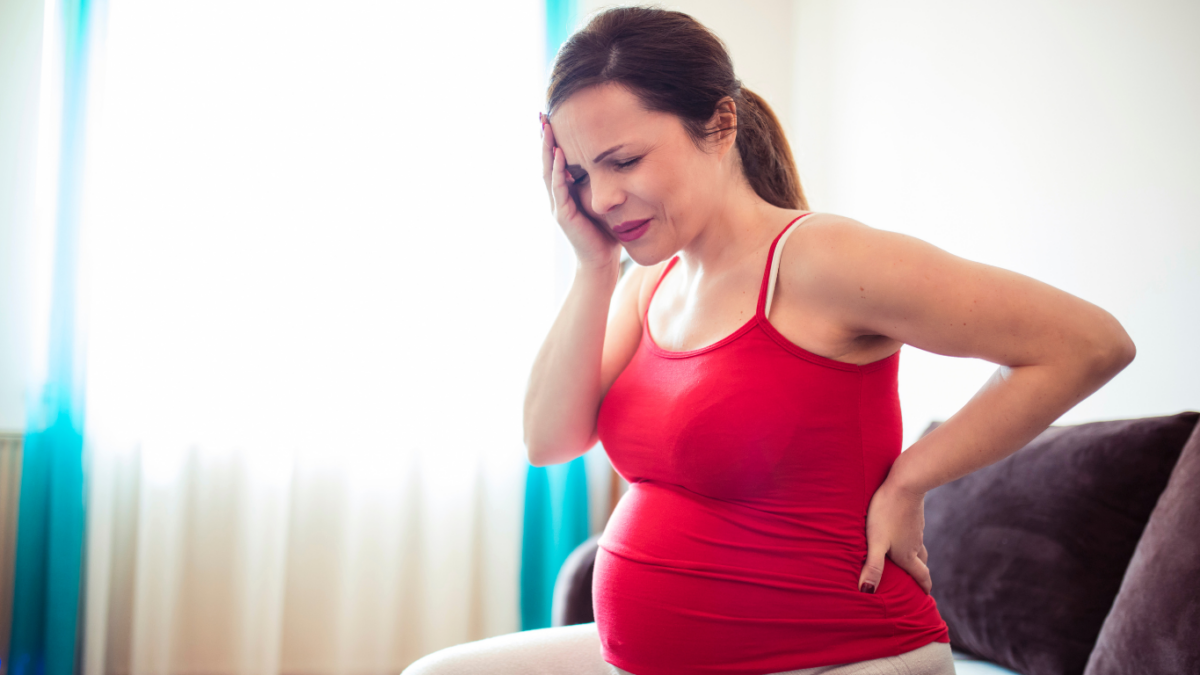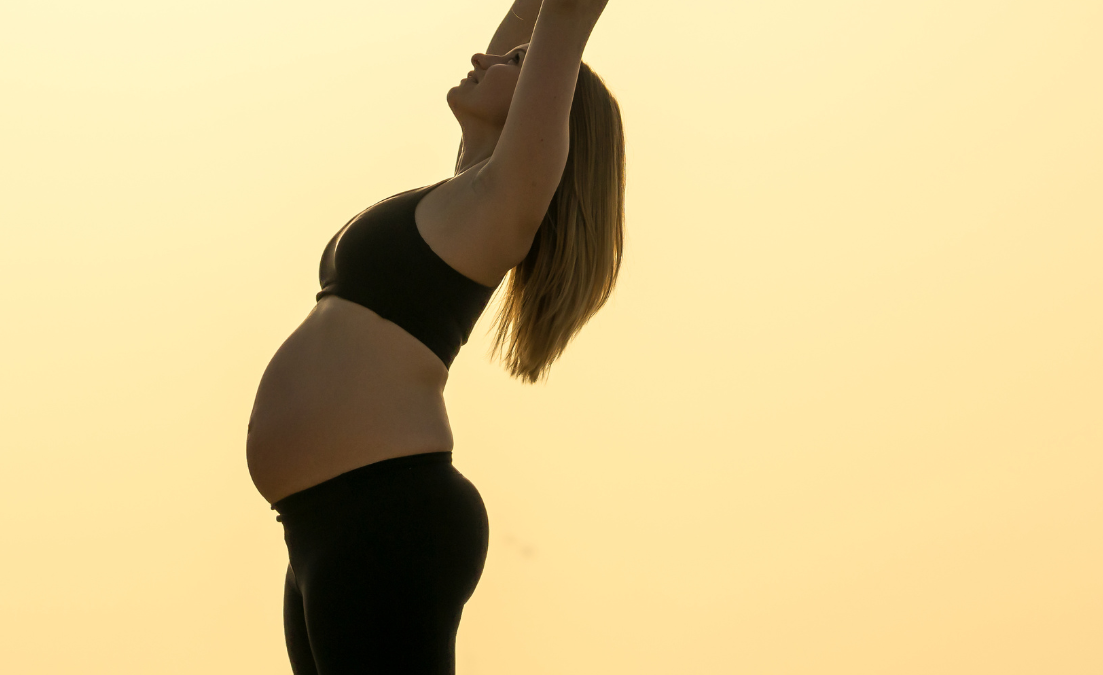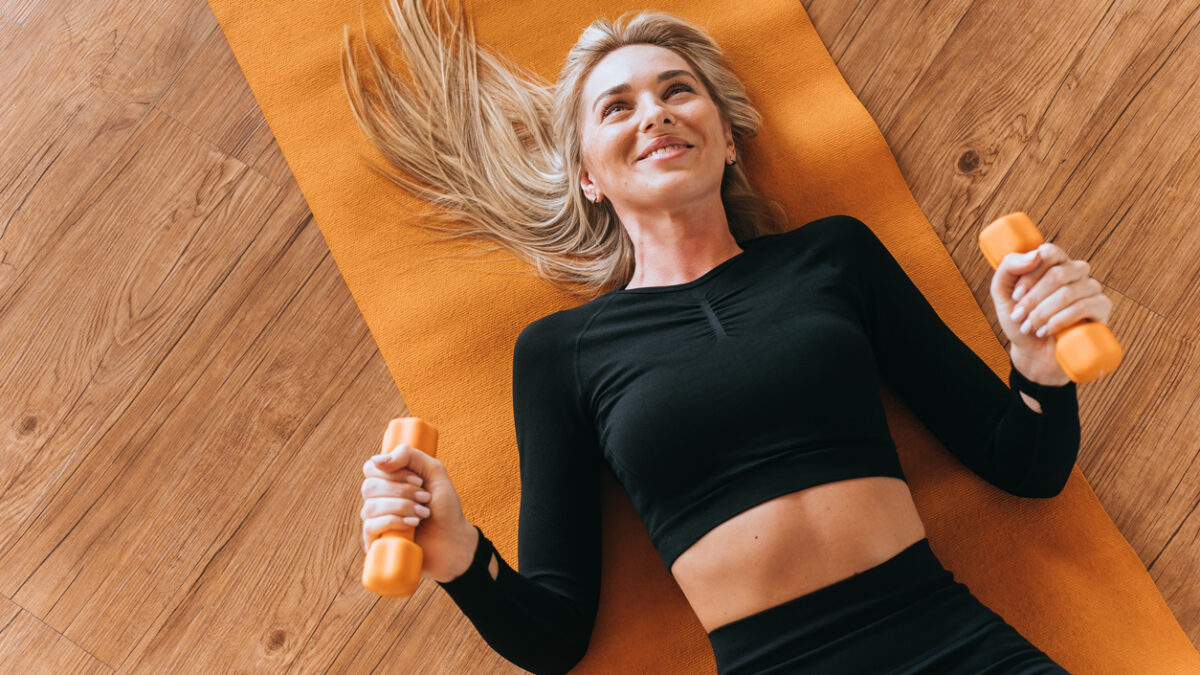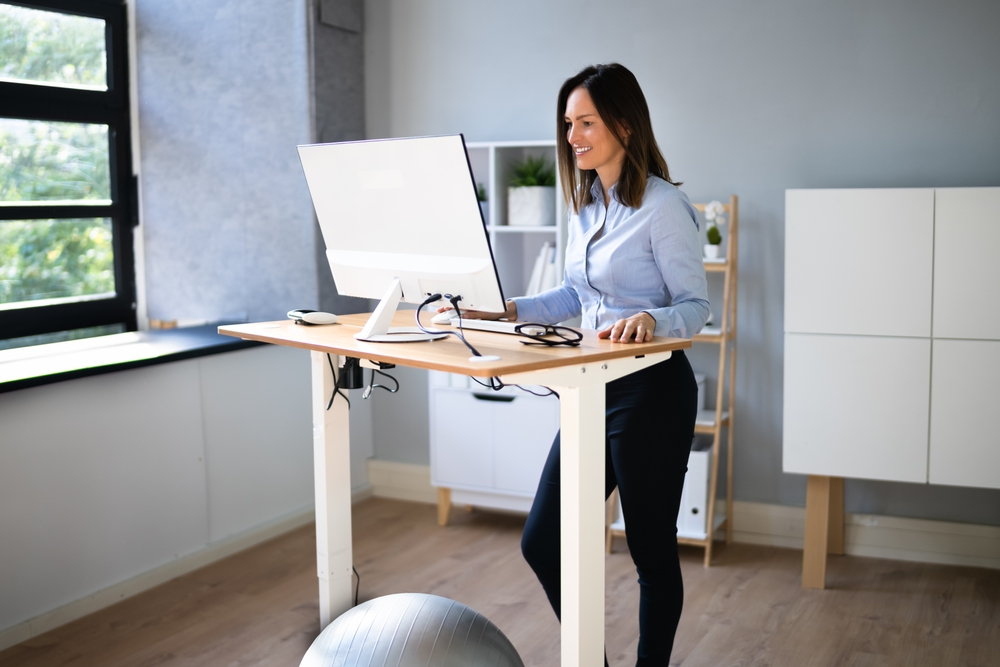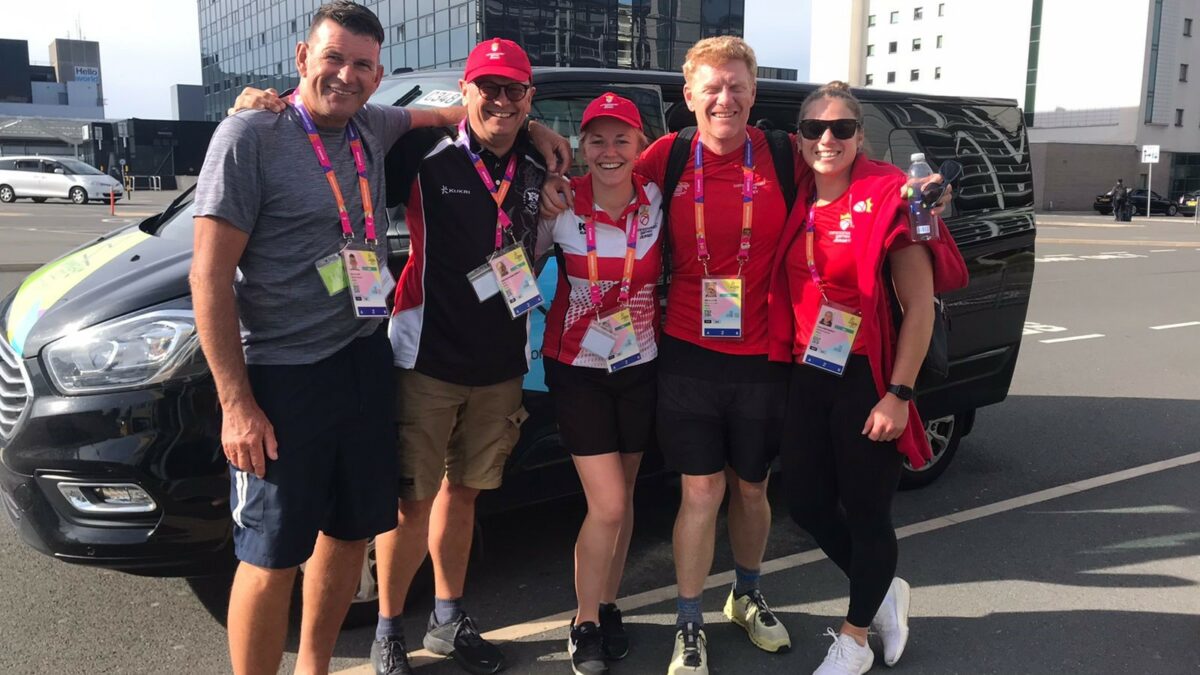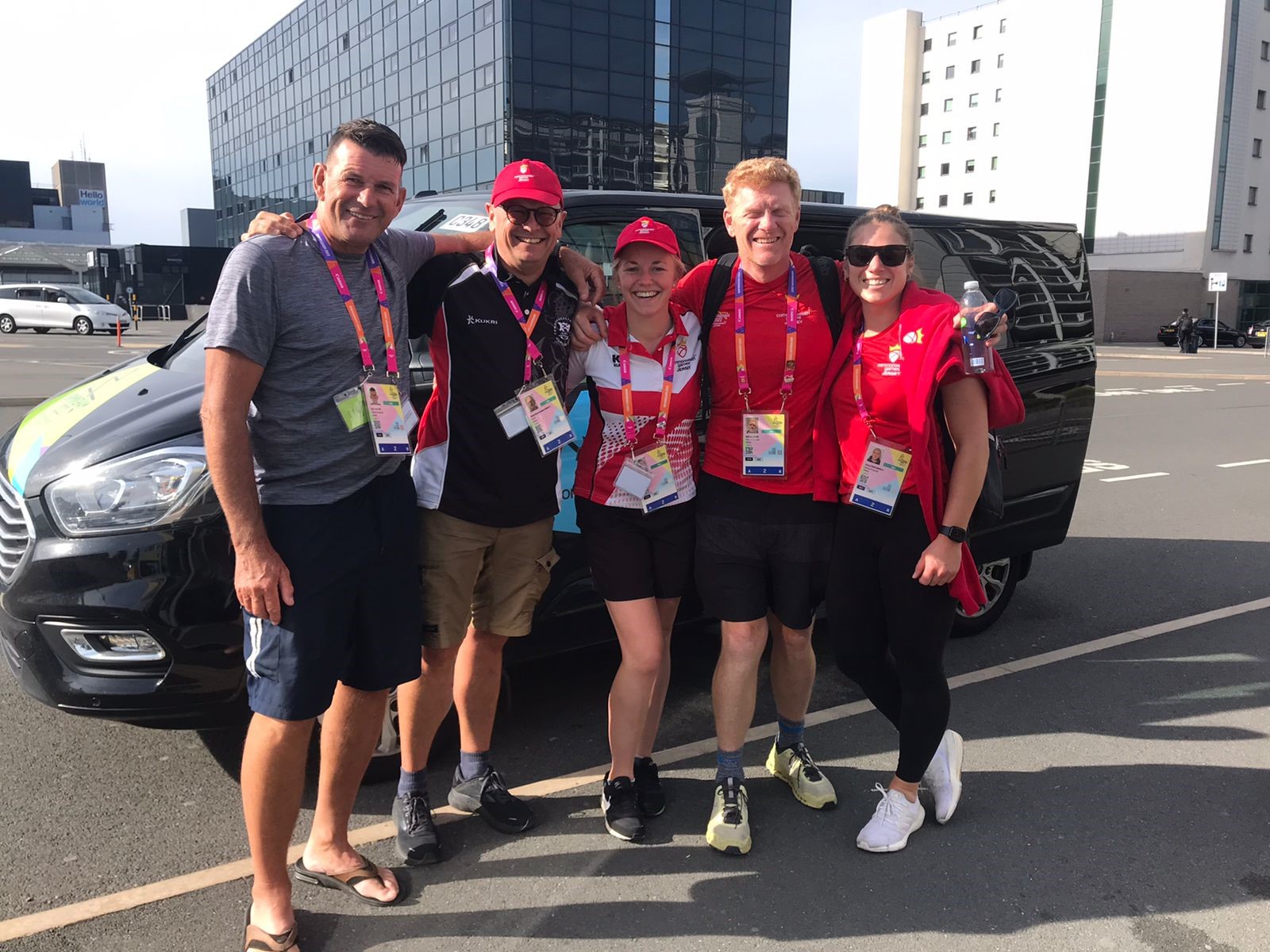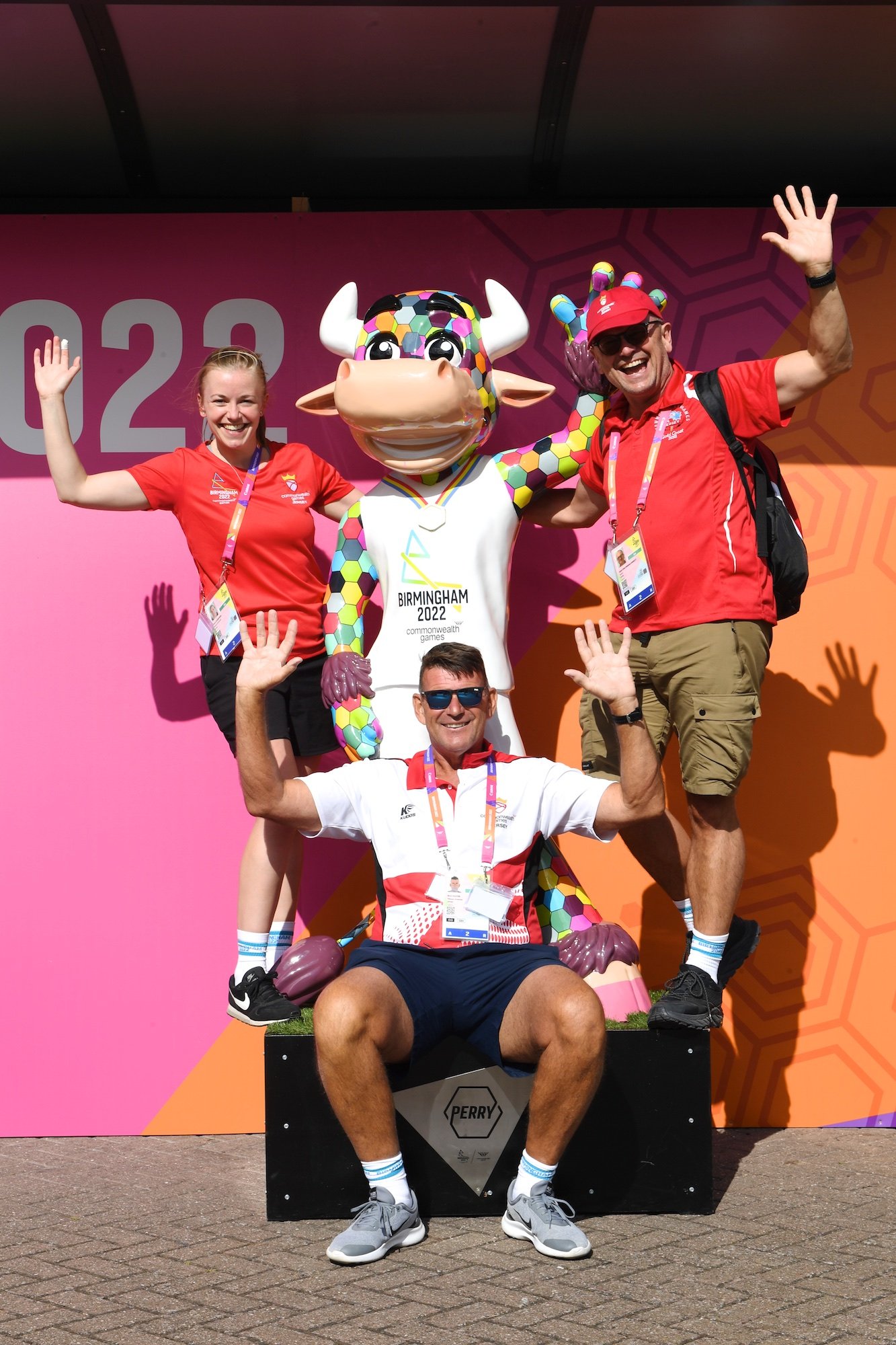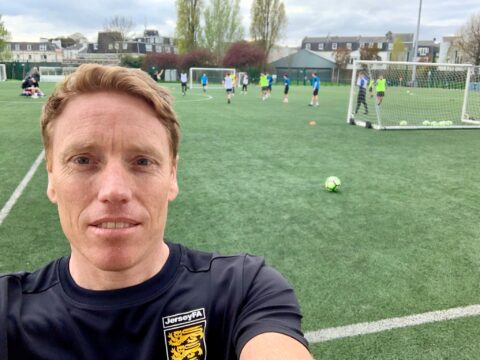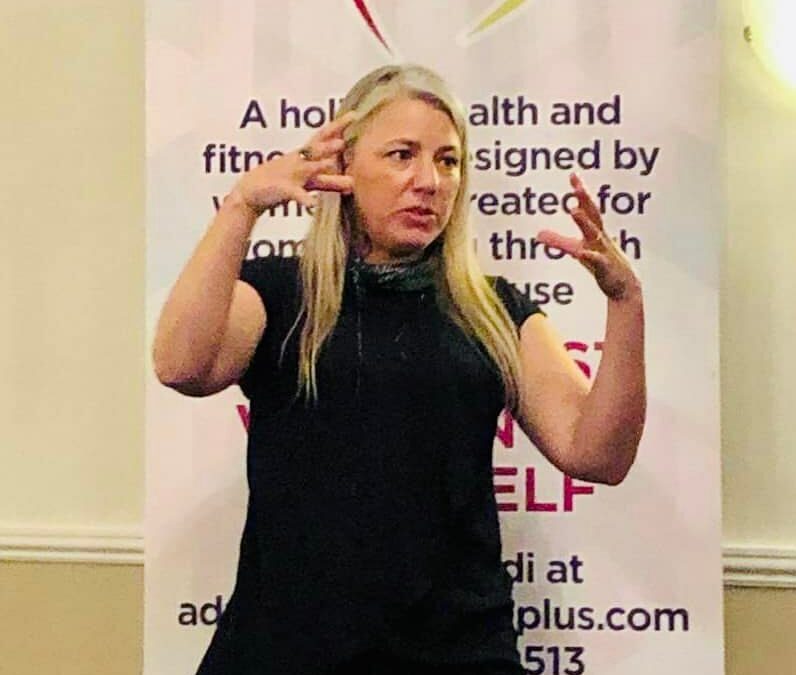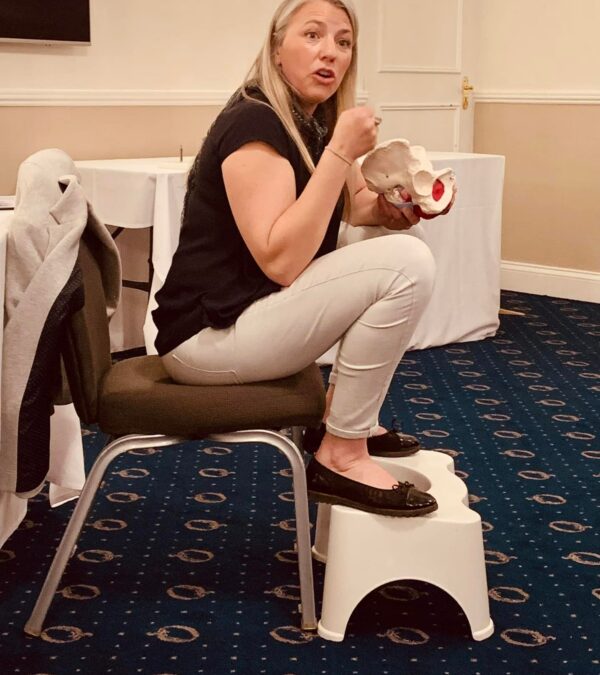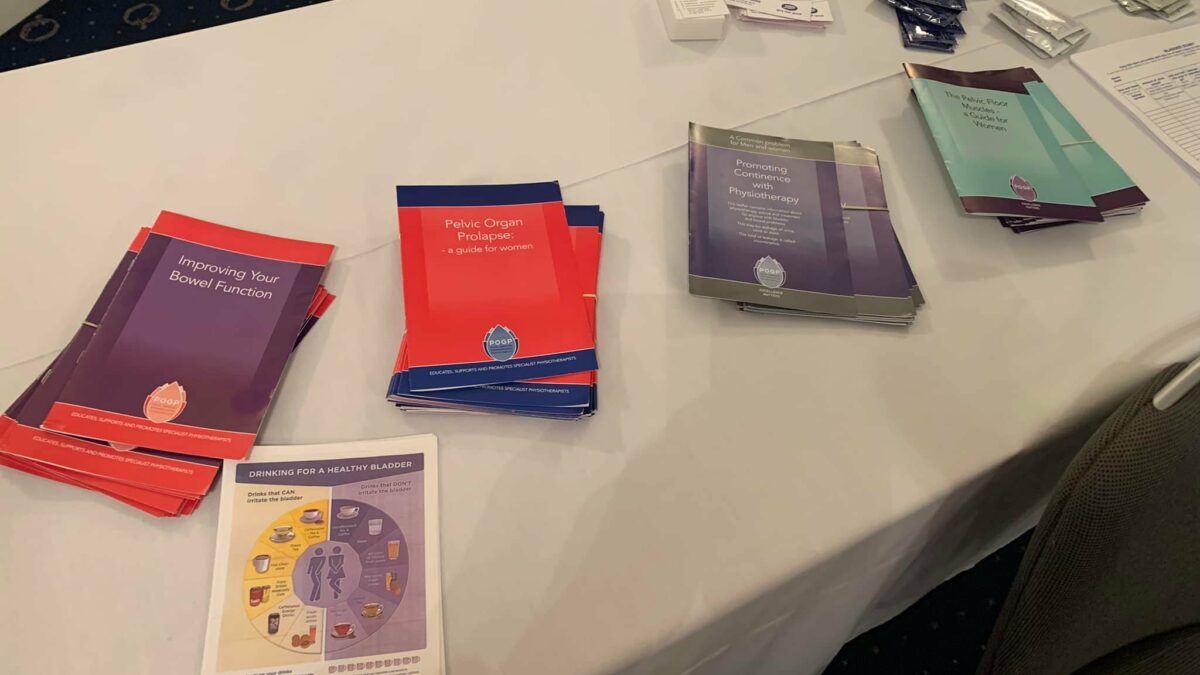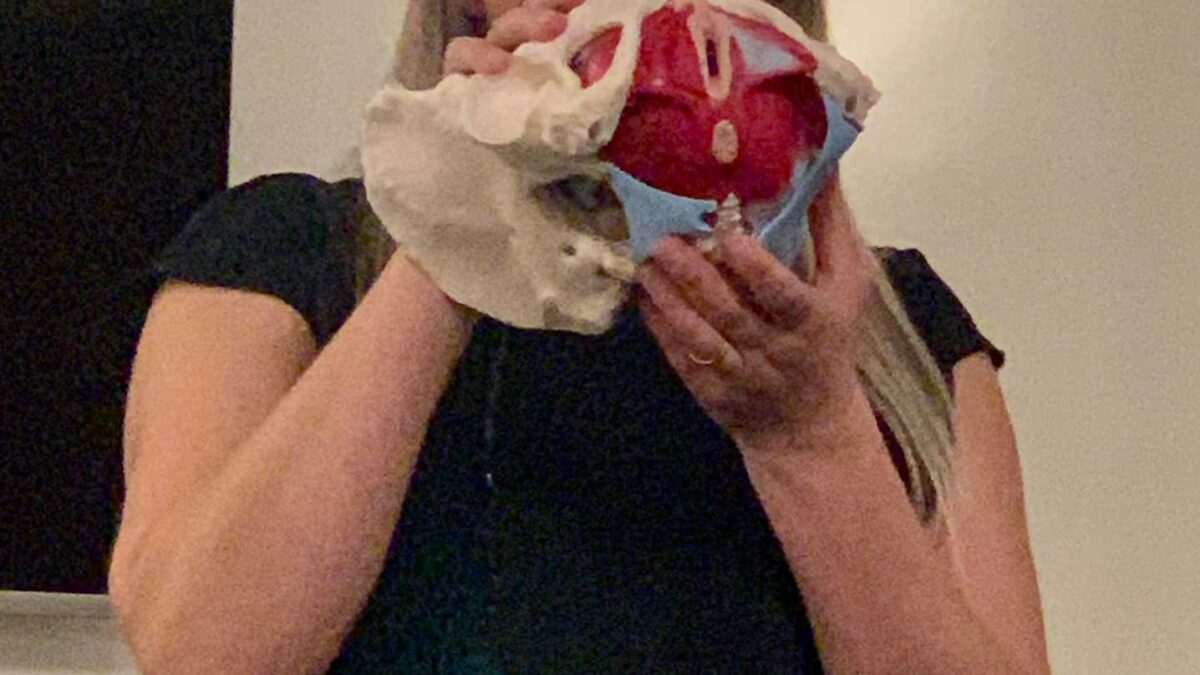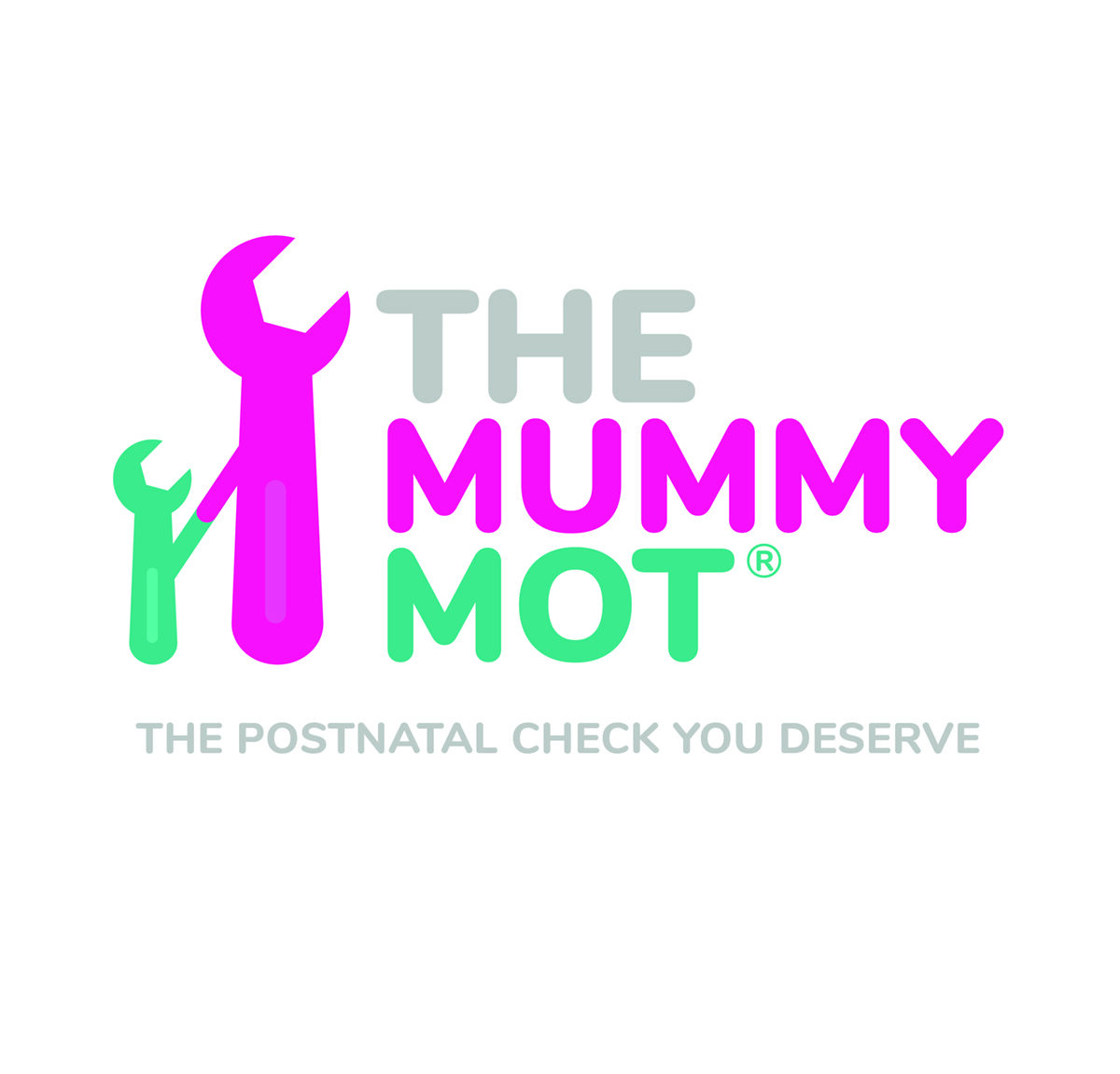Low Back and Pelvic Girdle Pain in Pregnancy: Can Physiotherapy Help?
Pregnancy-related pelvic girdle pain (PGP) is more common than you might think, affecting 1 in 5 pregnant women. It can occur during or after pregnancy, but it’s important to know that while it’s common, it’s not something you have to simply endure. PGP refers to pain or discomfort in the lower back, pelvis, hips, groin, thighs, and sometimes the pubic area. The severity varies, from mild discomfort to intense pain that can impact one’s quality of life, sleep, and ability to walk, exercise, and socialise. Low back pain in pregnancy is even more common, 50% of pregnant women may experience it but in most cases, it is not an indication of injury or harm.
As science evolves, so does our understanding and treatment options for pelvic and lower back pain in pregnancy. Prolonged rest or simply waiting for the pain to resolve after delivery is no longer recommended. Instead, a holistic approach offers the best support. The sooner you ask for help and get treatment the better. The pain can resolve, you do not have to have pain all the way through your pregnancy.
Treatment Options Include:
🔹 Pain Education: A physiotherapist can help you understand how pain works, reducing fear and boosting confidence in managing it. Sometimes, just knowing how pain mechanisms operate can lessen the pain itself.
🔹 Psychological Factors: Emotions and pain are closely linked. Addressing distress, anxiety, and worries can significantly improve your pain experience.
🔹 Lifestyle Tips: Staying hydrated, getting enough sleep, and balancing rest with activity is crucial. Practical advice on daily activities, such as getting out of bed or playing with your toddler, can also make a big difference.
🔹 Exercise & Manual Therapy: Pregnant women often experience stiffness in the muscles around the pelvic area, lower back, and thighs. A physiotherapist can alleviate this tension through gentle soft tissue release. Tailoring the right level of exercise to your specific situation and needs is crucial for a happy and healthy childbearing year.
See our social media platforms for more information on the treatments for back pain and pelvic pain in pregnancy
https://www.facebook.com/PerformancePhysiotherapyJersey
https://www.instagram.com/performancephysiojersey/
https://www.linkedin.com/company/performance-physiotherapy-jersey/?viewAsMember=true
Tackling low back and pelvic girdle pain in pregnancy is a multifaceted task. Reach out to a physiotherapist to make your pregnancy journey more comfortable and enjoyable.
Here are some tips to help reduce pain and discomfort in the pelvis and lower back:
1. Getting Up from Sitting to Standing:
After prolonged sitting, gently tilt your pelvis forward and backward several times. Then, bring your feet directly under your seat, lean forward, and push through your legs to stand up.
Why does this help? When you’ve been still for a while, your joints can become stiff and need to be lubricated before they are loaded. Moving your joints is like putting a lubricant (think WD-40) on a sticking or squeaky door hinge. When you gently do pelvic tilts, you are lubricating your joints and preparing your body to move well before adding the load of gravity.
2. Turning in Bed:
Place a pillow between your legs and squeeze it to keep your knees gently together for 6 seconds. Repeat this 2-3 times. Then, clench your buttocks for 6 seconds and release, repeating 2-3 times. When you turn, squeeze the pillow as you move from one side to the other. Using silky bed linens and smooth night clothing can help reduce friction.
Our favourite technique is ‘rolling under’! This means rolling onto your hands and knees before rolling onto your other side. While on your hands and knees, you can do some “Cat/Cow” or “Thread the Needle” exercises. Then, continue to ‘roll under’ so that you end up resting on the other side.
Why does this help? When you lie down for a long time, your joints can get stiff, just like when you sit for too long. If you’ve been sleeping, your heart beats slower and your blood pressure goes down. To get your body ready to move, you need to get your blood flowing. One way to do this is by squeezing your muscles and holding them for 6 seconds. This helps your blood move around and gets your muscles ready to work. It’s like putting fuel in a car to make it go.
So, before you get up, try squeezing your muscles to get your body ready!
3. Strengthening Exercise for Hip Support and Calf Swelling:
Wrap a resistance band around your thighs. Perform a squat while pushing your knees outward, then rise onto your toes. Repeat this exercise 10 times.
Why does this exercise help?
Okay, here’s a slightly longer but important answer to why we do this simple and quick exercise. Understanding why we do something helps us commit to doing the exercise! Let’s start with why exercise is important during pregnancy. Anytime you clench a muscle, you are squeezing the blood vessels and then releasing them. This helps to improve circulation and can reduce pain, among other benefits.

During pregnancy, a woman’s body undergoes significant changes to support both her and the growing baby. There are some very visible changes but one big change we don’t always notice is to the cardiovascular system. Did you know that to supply enough oxygen and nutrients to the baby the pregnant woman’s blood volume increases commonly by 45% (20-100% range)! This naturally results in a faster heart rate to help pump around the extra blood volume. A faster heart rate might make you feel breathless or faint with exercise or result in heart palpitations. Always get any unusual symptoms checked out by your Midwife or Doctor.
The blood vessels have to widen to make space for the increased blood and this happens as early as 5 weeks into a pregnancy! These early hormone changes also increase kidney function, which is why very early on in pregnancy many women need to urinate frequently, for some women this is their first sign that they are pregnant, and it isn’t due to the baby pressing on the bladder! The widen
ing of the blood vessels results in a drop in blood pressure. This happens very early on in the pregnancy, during the first weeks 6-8, before many women even know they are pregnant. Symptoms of a lowered blood pressure may be feeling faint, nauseous, dizzy or fatigued.
As the pregnancy progresses the cardiovascular changes can sometimes lead to issues like swelling in the legs and feet, varicose veins, and a higher risk of blood clots. Calf pumping exercises can help with these issues by:
Improving Venous Return – calf raises, or calf pumps, make the blood pump back to your heart quicker and more effectively. This is good to do if you are getting symptoms of low blood pressure.
Preventing Venous Stasis – this means stopping the blood pooling in the lower leg which can reduce the risk of varicose veins and blood clots. Did you know you can get varicose veins in the vulva as well? This is another good reason to get started on your pelvic floor exercises early!
Improving Lymphatic Drainage – When a muscle clenches and releases, the lymphatic vessels, as well as the blood vessels, are compressed and released. This helps improve circulation and can reduce swelling, particularly if you experience swelling in your hands or feet. Please be aware that a sudden increase in swelling could be due to another medical issue, so you must speak to your doctor or midwife if you suddenly get swelling or notice a sudden worsening of swelling. So, by doing calf pumping exercises, and any other exercise, pregnant women can improve their circulation, reduce swelling, and lower the risk of complications related to poor blood flow.
So why are squats so great? 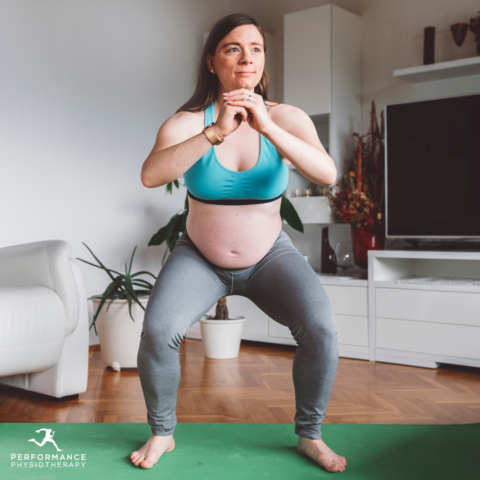
Why aren’t they?! Squats can be incredibly beneficial during pregnancy for several reasons:
Strengthening Muscles: Squats help strengthen the muscles in your legs, hips, and lower back. This strength can support the extra weight you are carrying and also help with the positional changes that your body is going through. Better gluteal strength can help reduce pelvic girdle pain and lower back pain.
Preparing for Labour: It’s not called ‘labour’ for nothing! Squats can help prepare your body for the physical demands of labour. Squats help keep your hips flexible and your body strong in positions that are comfortable and helpful for delivering your baby. Squatting is a really great position to labour and delivery your baby in so it’s good to practice and be strong in this position. A recent study from Japan showed that using a birth ball and squatting position during labour are effective methods of reducing labour pain, shortening the duration of labour, and increasing the level of satisfaction – how great is that! (image of birthing ball and pregnant woman.
Boosting Circulation: Regular squatting can improve blood circulation, which is beneficial for both you and your baby as we have already mentioned.
Reducing Fatigue, depression and improving mood: You might think that if you’re tired, exercise will make you even more tired, but that’s not the case. Doing exercises, particularly squats, which are great whole-body exercises, can boost your energy levels. They do this by increasing blood circulation and oxygen, as well as boosting your happy hormones!
Remember, it’s always important to consult with your healthcare provider before starting any new exercise routine during pregnancy to ensure it’s safe for you and your baby.
4. Back Mobility:
While standing, bend your right knee and stretch your right arm up and across your body. Switch sides and repeat a few times. Next, stretch your arms forward, rounding your back and bending your knees. Then, arch your back, drawing your elbows back and opening your chest. Repeat this sequence several times.
Why does this exercise help? One of the more visible changes in later pregnancy is the growing baby. During the third trimester, the uterus is growing and this presses into the ribs changing their shape and angle of function. This results in tension and stiffness in the upper back muscles and joints and reduces the ability to take deep breaths.
The growing baby also changes your centre of gravity (COG). The centre of gravity (COG) in the human body is the point where the body’s mass is evenly distributed in all directions, typically located around the lower abdomen, just below the navel. So you can see that as the belly button pushes out with the growing baby that balance is challenged because the COG moves out from the base of support. The base of support is the area between your feet that helps you stay balanced. Your body naturally tries to counterbalance this change by tensioning the muscles in the upper back.
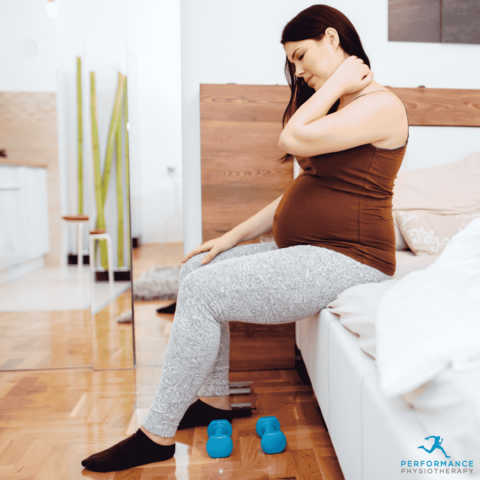 Keeping your upper back and rib cage moving will help reduce any tension in the back muscles as well as help to keep the spine joints well lubricated and as mobile as possible. Make sure you see your Doctor or Midwife if you have any new or sudden rib or upper back pain.
Keeping your upper back and rib cage moving will help reduce any tension in the back muscles as well as help to keep the spine joints well lubricated and as mobile as possible. Make sure you see your Doctor or Midwife if you have any new or sudden rib or upper back pain.
We hope this article and related social media posts have been helpful. Call if you need help. Book here if you want further assessment and advice, we would be happy to help.
Visit our website physio.je.
Contact us by calling (01534) 733 913 or via email info@physio.je.
Other useful links:
Respiratory physiology in pregnancy and assessment of pulmonary function – ScienceDirect

